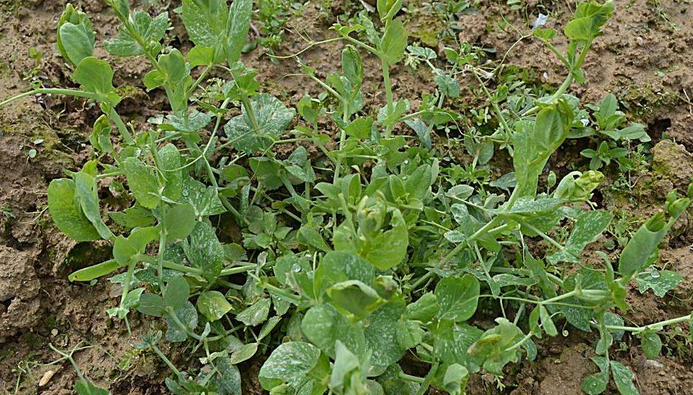1. Soilless cultivation
Pea seedlings are sprouted vegetables, alias "Dragon's mustard", which is a non-polluting green food. Its texture is delicate, the fragrance is clear, and the nutrition is rich in high-quality fresh vegetables. The use of soilless cultivated pea seedlings can be produced all year round as long as it maintains suitable temperature and humidity. It has the characteristics of low investment, quick effect and high efficiency, and is well received by the masses. The main points of cultivation techniques are as follows.
1. Choose excellent species
It is advisable to use pea varieties with high yield, fast growth, strong seedlings and good quality, such as white jade peas, Japanese Xiaoying, hemp peas, green peas and Taiwan peas. In order to ensure a high germination rate, it is best to use fresh seeds that are produced or stored for one year in the year, and pay attention to picking up seeds such as broken, insect bites, deformities, and glutinous grains to prevent rotten and mildew in production. ;
2. Soaking seeds and germination
Before sowing, place the selected seeds in hot water at 55 °C and stir for about 15 minutes. When the water temperature drops to about 25 °C, add 500 times of the agricultural insurance No. 1 liquid fertilizer and continue soaking for 5-6 hours; Remove and wrap it in a damp cloth and place it at 20~25°C for germination; when there are about 70% of the seeds, you can sown;
3. Seeding on the plate
Plastic seedling trays for cultivation or tinplates welded with tinplate (specification: length, width, height, 60, 25, 5 cm, respectively), first disinfected with 3% to 5% bleach or lime water, and then used Rinse off with water. Place two layers of clean white cotton paper or non-woven fabric in the tray to make it absorb water evenly and keep the temperature. Spread the seeds evenly in the pan, about 1500 grams per square meter (based on the dry seed amount 0. Spray 20 °C warm water after sowing, put the plate on the seedling rack;
4. Scientific management
After the shelves are placed on the shelves, they are covered with a black plastic film (also available in darkrooms) to encourage the growth of the shoots in the dark. Every 6~8 hours, spray a warm water of 20 °C, so as to fully wet the mat inside the dish without running water. In combination with water spray, organic fertilizers such as Hexin Liquid Fertilizer and Nongbaozan No. 1 are added 600 times at intervals of 3 to 5 times to ensure the growth of the seedlings and increase the yield and quality. When spraying water, it should be noted that the seeds that are not germinated should be eliminated to avoid mildew. During the cultivation period, the indoor air humidity should be kept at about 85%, the temperature is 15~20°C (optimally 18~20°C, slow growth below 12°C, and longer than 25°C), so as to facilitate the normal growth and development of the sprouts;
5. Timely listing
Under the dark condition of heat preservation and moisturizing, the pea seedlings can reach 15~18 cm after 12~15 days. At this time, the sunshade should be gradually removed, and the seedlings should continue to grow for 2 to 3 days under natural light. When the buds are changed from yellow-green to thick green, the leaves are slightly waxy, and the stems are nearly square, they can be listed on the whole plate. They can also be sold from the base of the stem of the sprouts with a sharp knife and put into a fresh-keeping bag. Its output is generally 2 to 3 times the amount of seeding.

Second, cultivation technology
The pea sprouts are rich in vitamins and phosphorus, calcium, iron and other substances. They can be fried and made into soups. They are delicious and nutritious, and are popular among consumers.
The cultivation method is now introduced as follows:
1. Selection of suitable varieties
Taiwanese dish, Taiwan No. 3 pea, stems and leaves are thick and fresh, which is an ideal variety choice.
2. Production period
The production cycle of the nutrient tray is short, and it can be harvested in 25 to 30 days. The production of vegetables in the off-season is better in the middle of October to the end of March of the next year.
3. Nursery tray specifications
Use a seedling tray with a length of 60 cm and a width of 40 cm. Spread 2 cm of fine sand in the dish and pour water before sowing.
4. Soaking seeds and germination
Soak seeds in warm water at 50 ° C for 24 hours, then wrap them in a warm, damp cloth and keep them at a warm place. Keep the temperature at 20 ~ 25 ° C. After the seeds are broken, spread them evenly in the seedling tray and place the plates on the greenhouse.
5. Temperature and humidity and water and fertilizer management
Before the germination, the daytime temperature is controlled at 22-25 °C, the nighttime is 12-15 °C, the humidity is maintained at 80%-90%, the seedlings are two leaves, the water is watered with 0.3% urea solution, and every 7-8 afterwards. Watering once a day.
6. Timely harvesting
When the seedling height is 6 to 7 cm, with 6 leaves, and the seedling age is about 30 days, it can be harvested and marketed.
Fresh Mushrooms,Freezing Fresh Mushrooms,Fresh Button Mushroom,Freezing Mushrooms
Guangyun Agricultural Biotechnology (Jiangsu) Co., Ltd , https://www.7-mushrooms.com